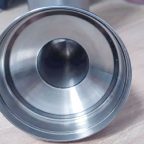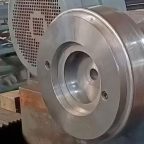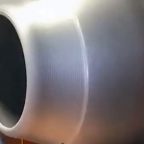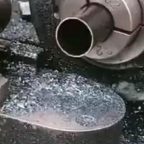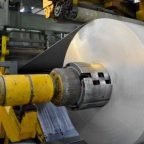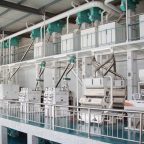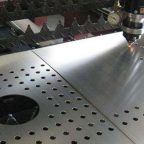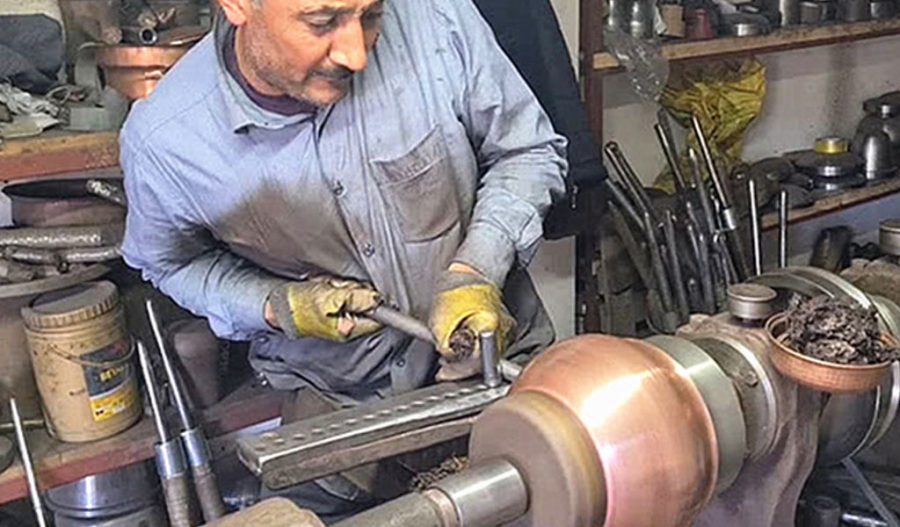
Metal spinning, also known as spin forming or metal turning, is a metalworking process that dates back several centuries. It involves rotating a metal disc or tube on a lathe and shaping it using various tools to form axially symmetric parts. This traditional technique has been transformed significantly with the advent of Computer Numerical Control (CNC) technology, leading to the modern process known as metal CNC spinning.
Metal CNC spinning combines the precision of CNC machining with the traditional art of metal spinning. This advancement has revolutionized the manufacturing of symmetrical metal parts, allowing for greater accuracy, repeatability, and efficiency. The invention and evolution of metal CNC spinning is a fascinating story that intertwines with the broader development of metalworking technologies and the rise of digital control systems in manufacturing.
This article explores the history, development, and impact of metal CNC spinning, focusing on its origins, key inventors, and the technological advancements that have shaped this process.
Historical Background
Early Metal Spinning Techniques
Metal spinning is an ancient technique, with evidence of its practice dating back to ancient Egypt and the Roman Empire. Traditionally, the process was manual, requiring skilled craftsmen to shape metal by hand. The process was primarily used for making household items, such as bowls, vases, and lampshades.
During the Industrial Revolution in the 18th and 19th centuries, metal spinning began to evolve with the introduction of mechanical lathes and steam power. These innovations increased production speed and allowed for the creation of more complex and larger parts.
Transition to Mechanized Spinning
In the early 20th century, the mechanization of metal spinning gained momentum, with the development of motor-driven lathes and hydraulic systems. These advancements made the process less labor-intensive and more suitable for mass production. However, even with these mechanized tools, the process still required significant manual input, especially for more intricate designs.
The Emergence of CNC Technology
The concept of numerical control (NC) began to take shape in the 1940s and 1950s, largely driven by the aerospace industry’s need for more precise and complex parts. The development of NC technology involved using punched cards or tapes to control machinery, allowing for more accurate and repeatable processes.
The introduction of digital computers into manufacturing in the 1960s and 1970s marked the birth of Computer Numerical Control (CNC). CNC technology provided a quantum leap in precision, allowing for the automation of complex tasks that were previously manual.
Invention of Metal CNC Spinning
Early Innovators and Key Figures
The transition from traditional metal spinning to CNC-controlled spinning was not the work of a single inventor but rather a gradual evolution driven by advancements in both metalworking and digital control technologies. Several key figures and companies played pivotal roles in this development.
- Metal spinning technology was invented by a German scientist. In the late 1760s, the scientist applied for the world’s first patent for metal spinning technology, which gave the technology its own name. Metal spinning technology, also known as metal spinning forming technology, is a process that uses rotation to cause continuous local plastic deformation of metal blanks (metal sheets or tubes) to form the required hollow rotating parts with little cutting. This technology was not named at first until the late 1760s when the German scientist named it and applied for a patent. Subsequently, the continuously updated spinning forming technology has become an indispensable processing technology in the high-precision field1.
- John T. Parsons: Often regarded as the father of CNC technology, John T. Parsons, along with his colleague Frank L. Stulen, developed the first NC milling machine in the 1940s. Their work laid the foundation for CNC technology, which would later be applied to metal spinning.
- Machine Tool Manufacturers: Companies like Monarch Machine Tool Company and Cincinnati Milacron were early adopters and innovators in the field of CNC technology. They recognized the potential of CNC for various metalworking processes, including spinning.
- Pioneering Workshops: Throughout the 1960s and 1970s, various workshops and manufacturers began experimenting with applying CNC technology to metal spinning. These early efforts were often driven by the need for greater precision in aerospace and automotive parts.
Development of CNC Metal Spinning Machines
The first CNC metal spinning machines began to emerge in the late 1970s and early 1980s. These machines were capable of automating the entire spinning process, from the initial setup to the final product. The key features of these machines included:
- Digital Control Systems: The use of CNC allowed for precise control over the spinning process, including speed, pressure, and tool movement.
- Automated Tooling: CNC machines could be equipped with a variety of tools, allowing for the creation of complex shapes without the need for manual intervention.
- Enhanced Precision: The use of digital controls reduced human error and allowed for the production of parts with tight tolerances.
Commercialization and Adoption
By the 1980s and 1990s, CNC metal spinning had become a standard process in industries such as aerospace, automotive, and metalworking. The commercialization of CNC metal spinning machines was driven by several factors:
- Demand for Precision: The aerospace and automotive industries required parts with increasingly tight tolerances, which could only be achieved through CNC-controlled processes.
- Cost Efficiency: CNC metal spinning machines allowed for faster production times and reduced labor costs, making the process more cost-effective.
- Flexibility: CNC technology allowed manufacturers to easily switch between different designs and materials, increasing the versatility of the metal spinning process.
Technological Advancements in CNC Metal Spinning
Software and Programming
One of the most significant advancements in CNC metal spinning has been the development of sophisticated software and programming tools. Early CNC machines relied on simple code and required extensive manual programming. Today, modern CNC metal spinning machines are equipped with advanced software that allows for:
- 3D Modeling: Engineers can create detailed 3D models of the desired part, which can then be directly translated into CNC code.
- Simulation: CNC software can simulate the entire spinning process, allowing for adjustments before the actual production begins.
- Automation: Modern CNC machines can be programmed to handle multiple steps of the manufacturing process, from loading the material to finishing the final product.
Integration with Other Manufacturing Processes
CNC metal spinning is often integrated with other manufacturing processes to create more complex parts. For example, CNC spinning can be combined with:
- Welding: After spinning, parts may be welded together to create larger assemblies.
- Machining: CNC milling or turning may be used to add features such as holes or threads to the spun part.
- Heat Treatment: Spun parts may undergo heat treatment to enhance their mechanical properties.
Material Advancements
Advances in material science have also played a crucial role in the development of CNC metal spinning. Modern CNC machines are capable of spinning a wide range of materials, including:
- Aluminum: Widely used in aerospace and automotive applications due to its lightweight and corrosion-resistant properties.
- Stainless Steel: Preferred for applications requiring high strength and resistance to heat and corrosion.
- Titanium: Used in high-performance applications, such as aerospace and medical devices, due to its excellent strength-to-weight ratio.
- Exotic Alloys: CNC metal spinning can also handle exotic alloys, such as Inconel and Hastelloy, which are used in extreme environments.
Applications of CNC Metal Spinning
Aerospace Industry
The aerospace industry was one of the earliest adopters of CNC metal spinning, and it remains one of the largest users of this technology. CNC metal spinning is used to create a wide range of aerospace components, including:
- Engine Components: CNC metal spinning is used to produce turbine disks, engine casings, and other critical engine components.
- Structural Components: The process is also used to create structural components, such as frames and brackets, which require high precision and strength.
- Propellant Tanks: In the space industry, CNC metal spinning is used to manufacture propellant tanks, which are essential for rocket propulsion.
Automotive Industry
In the automotive industry, CNC metal spinning is used to produce components that require high precision and durability. Applications include:
- Wheels: CNC metal spinning is used to manufacture alloy wheels, which are lighter and stronger than traditional steel wheels.
- Exhaust Components: The process is also used to create exhaust components, such as mufflers and catalytic converter shells, which require precise shaping and high-temperature resistance.
- Suspension Components: CNC metal spinning is used to produce suspension components, such as control arms and shock absorber mounts, which must withstand high stress and fatigue.
Medical Industry
The medical industry has also benefited from the precision and versatility of CNC metal spinning. Applications include:
- Surgical Instruments: CNC metal spinning is used to manufacture surgical instruments, such as scalpels and forceps, which require high precision and sterility.
- Implants: The process is also used to create medical implants, such as hip and knee replacements, which require complex geometries and biocompatible materials.
- Medical Devices: CNC metal spinning is used to produce components for medical devices, such as pacemakers and MRI machines, which require precise and reliable performance.
Consumer Products
CNC metal spinning is also used in the production of various consumer products, including:
- Lighting Fixtures: The process is used to create lampshades and light reflectors, which require precise shaping and smooth finishes.
- Cookware: CNC metal spinning is used to manufacture high-quality cookware, such as pots and pans, which require even heat distribution and durability.
- Decorative Items: The process is also used to create decorative items, such as vases and bowls, which require intricate designs and high-quality finishes.
Impact on Manufacturing and Industry
Increased Precision and Quality
One of the most significant impacts of CNC metal spinning has been the increase in precision and quality of manufactured parts. The ability to control every aspect of the spinning process through CNC technology has allowed manufacturers to produce parts with extremely tight tolerances and consistent quality. This has been particularly important in industries such as aerospace and automotive, where even minor deviations can have serious consequences.
Enhanced Efficiency and Productivity
CNC metal spinning has also greatly enhanced the efficiency and productivity of the manufacturing process. By automating the spinning process, CNC machines can produce parts much faster than traditional manual spinning methods. This has allowed manufacturers to meet the growing demand for high-quality parts while reducing production times and costs.
Cost-Effective Production
Despite the initial investment in CNC metal spinning machines, the process has proven to be cost-effective in the long run. The ability to produce parts with minimal waste and reduced labor costs has made CNC metal spinning an attractive option for manufacturers. Additionally, the versatility of CNC machines allows manufacturers to produce a wide range of parts using the same equipment, further reducing costs.
Customization and Flexibility
CNC metal spinning has also allowed for greater customization and flexibility in the manufacturing process. Manufacturers can easily adjust the CNC program to produce different parts or modify existing designs. This has been particularly beneficial for industries that require small batch production or custom parts, such as aerospace and medical devices.
Global Competitiveness
The adoption of CNC metal spinning has also enhanced the global competitiveness of manufacturers. By utilizing advanced technology, manufacturers can produce high-quality parts at competitive prices, allowing them to compete in the global market. Additionally, the precision and reliability of CNC metal spinning have made it a preferred method for producing parts in industries that require stringent quality standards.
Challenges and Limitations
High Initial Investment
One of the main challenges of CNC metal spinning is the high initial investment required for CNC machines and software. While the process can be cost-effective in the long run, the upfront costs can be prohibitive for small manufacturers or those with limited budgets. Additionally, the complexity of CNC machines requires skilled operators and maintenance personnel, adding to the overall cost.
Material Limitations
While CNC metal spinning is capable of handling a wide range of materials, there are still limitations to the process. For example, some materials may be too brittle or hard to be effectively spun using CNC machines. Additionally, the process may not be suitable for materials that require complex internal geometries or features, which may require additional machining or fabrication processes.
Complexity of Programming
The programming of CNC metal spinning machines can be complex and time-consuming, particularly for intricate designs or custom parts. This requires skilled programmers and engineers who are familiar with CNC technology and metalworking processes. Additionally, the complexity of the programming can lead to errors or inefficiencies if not done correctly, resulting in wasted material or rework.
Dependence on Technology
CNC metal spinning is heavily dependent on technology, which can be both an advantage and a limitation. While the technology allows for greater precision and efficiency, it also requires regular maintenance and updates to ensure optimal performance. Additionally, the reliance on technology can make the process vulnerable to technical issues or failures, which can disrupt production and lead to downtime.
Future of CNC Metal Spinning
Advancements in CNC Technology
The future of CNC metal spinning is likely to be shaped by continued advancements in CNC technology. This includes the development of more sophisticated software and programming tools, as well as the integration of artificial intelligence and machine learning into the CNC process. These advancements could lead to even greater precision, efficiency, and automation in the manufacturing process.
Integration with Additive Manufacturing
Another potential development is the integration of CNC metal spinning with additive manufacturing, or 3D printing. This could allow for the creation of complex parts that combine the strengths of both processes, such as the precision and strength of CNC metal spinning with the design flexibility of additive manufacturing. This could also lead to new applications and markets for CNC metal spinning, particularly in industries that require lightweight or custom parts.
Sustainability and Environmental Impact
As sustainability becomes an increasingly important consideration in manufacturing, CNC metal spinning is likely to play a role in reducing the environmental impact of the industry. The process is already more material-efficient than traditional methods, as it generates less waste and requires less energy. Additionally, advancements in material science and recycling technologies could further enhance the sustainability of CNC metal spinning, making it an even more attractive option for manufacturers.
Expansion of Applications
The expansion of applications for CNC metal spinning is another potential area of growth. As the technology continues to advance, it could be used in new industries and for new applications, such as renewable energy, electric vehicles, and space exploration. Additionally, the development of new materials and alloys could further expand the possibilities for CNC metal spinning, allowing for the creation of parts with unique properties and performance characteristics.
Globalization and Industry Collaboration
The globalization of the manufacturing industry is likely to continue driving the adoption and development of CNC metal spinning. As manufacturers seek to remain competitive in the global market, they will increasingly turn to advanced technologies like CNC metal spinning to enhance their capabilities and reduce costs. Additionally, collaboration between industry leaders, research institutions, and technology providers could lead to new innovations and advancements in CNC metal spinning, further shaping the future of the industry.
Conclusion
Metal CNC spinning represents a significant advancement in the field of metalworking, combining the precision and efficiency of CNC technology with the traditional art of metal spinning. The invention and evolution of this process have been driven by a combination of technological advancements, industry demands, and the ingenuity of key innovators.
Today, CNC metal spinning is a vital process in industries ranging from aerospace to consumer products, offering unparalleled precision, flexibility, and cost-effectiveness. As the technology continues to evolve, it is likely to play an increasingly important role in the manufacturing industry, shaping the future of metalworking and beyond.
Maximize Tooling and CNC Metal Spinning Capabilities.
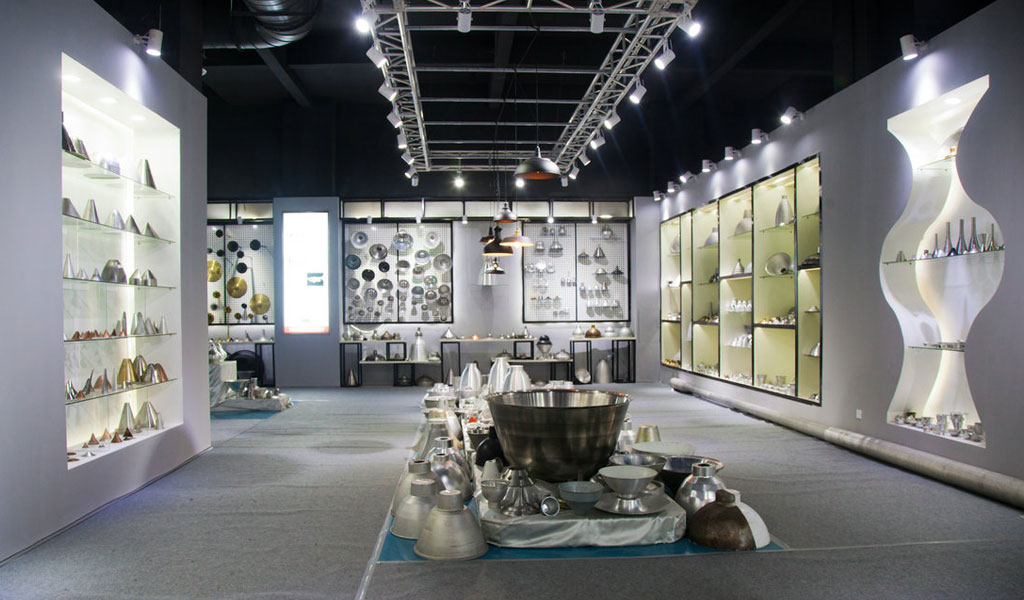
At BE-CU China Metal Spinning company, we make the most of our equipment while monitoring signs of excess wear and stress. In addition, we look into newer, modern equipment and invest in those that can support or increase our manufacturing capabilities. Our team is very mindful of our machines and tools, so we also routinely maintain them to ensure they don’t negatively impact your part’s quality and productivity.
Talk to us today about making a rapid prototype with our CNC metal spinning service. Get a direct quote by chatting with us here or request a free project review.
BE-CU China CNC Metal Spinning service include : CNC Metal Spinning,Metal Spinning Die,Laser Cutting, Tank Heads Spinning,Metal Hemispheres Spinning,Metal Cones Spinning,Metal Dish-Shaped Spinning,Metal Trumpet Spinning,Metal Venturi Spinning,Aluminum Spinning Products,Stainless Steel Spinning Products,Copper Spinning Products,Brass Spinning Products,Steel Spinning Product,Metal Spinnin LED Reflector,Metal Spinning Pressure Vessel,
